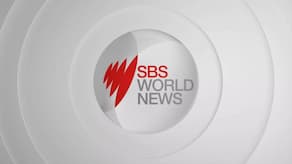No one should get carried away by measures of inflation at or near the top of the RBA's target range.
Since the RBA announced its inflation target just over 21 years ago, the inflation rate has been outside the target band most of the time.
Late in the March quarter of 1993, then RBA governor Bernie Fraser first publicly mentioned the target, annual inflation of two to three per cent.
Since then, starting with the figures for the June quarter of that year, the annual growth rate of the consumer price index has been either above three per cent or below two per cent on 48 of a total of 85 occasions.
That's 56 per cent of the time.
Even allowing for the temporary upward bias from the GST from mid-2000, the time spent out of the target would be 43 quarters out of 85 - a smidgin over 50 per cent.
And that's still most of the time.
What's really important for the RBA is that it hits the target, on average, over time.
And the figures on Wednesday confirm that it's done just that, about as accurately as anyone could want.
Between the March quarter of 1993 and the June quarter of this year, the CPI has risen at an average rate of 2.7 per cent, or 2.5 per cent allowing for the GST.
And not just 2.5 per cent, but 2.495 per cent - just five thousandths of a percentage point from the centre of the range.
There are a couple of lessons to take home from this.
One is that the RBA seems to know what it's doing, a controversial view in some circles.
The other is that an out-of-range CPI result - or a top-of-the-range result like the 3.0 per cent inflation rate revealed on Wednesday - is unlikely to cause too much stress at the central bank, because it's hardly unusual.
An unexpectedly strong result does tilt the bias fractionally away from interest rate cuts and towards rate rises.
That explains the market's reaction on Wednesday, when the Aussie dollar blipped up from 93.9 US cents to over 94.3.
The widely-watched measures of underlying inflation, calculated by the Australian Bureau of Statistics, came in at an average of 2.8 per cent, which was 0.1 or more above what the majority of economists had expected.
The slight shift in expectations for interest rates boosted demand for the currency.
But anyone thinking that the RBA automatically hikes when inflation is above the target and cuts when it's below it will have serious trouble finding clear evidence to support their view.
That's because the RBA is forward-looking.
It's too late to do anything about inflation in the June quarter, because it's already July.
